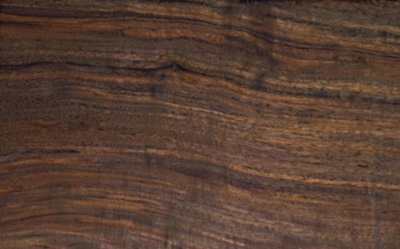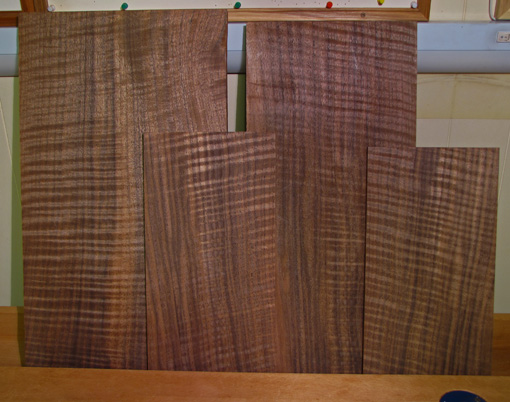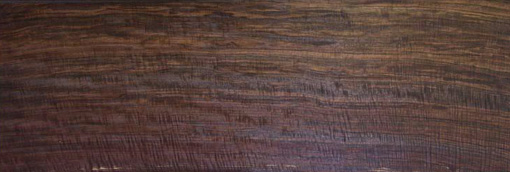This wood is so beautiful, varied, and agreeable to work with, that I imagine if I could have only one species of wood to use for everything, it might well be Claro walnut. It is so captivating that there is a real temptation to just join a few pieces corner to corner without any thought to a real design, state that “Woodwork is made by fools like me but only God can make a tree” (apologies to Joyce Kilmer), and leave it at that.
If there are doubts about this wood, it is only in being sure of its proper scientific label. Perhaps oversimplifying, Claro walnut is Juglans hindsii, native to northern California. The well-known Eastern (U.S.) black walnut, a great wood in its own right, is Juglans nigra. As best I understand, “Claro walnut” lumber may come from trees that are J. hindsii or a hindsii x nigra hybrid, or from the hindsii root stock upon which Juglans regia, English walnut, has been grafted. Botanical technicalities aside, it’s just gorgeous wood.
Claro’s strongest appeal to me is in the variety of rich colors that can be found mingled in a single board, most compellingly on a marbled quartered or rift surface. Even more spectacular, curly figure, delicate or ropy, may be superimposed on the marbled color array. Flatsawn boards are very often too gnarly for my taste, but certainly have their own appeal. Crotch figure is also available.


The working properties of Claro are much like black walnut: excellent. It is a medium-hard wood, pleasant to work but with enough surface hardness for any furniture item. Sawing, joinery, and gluing are almost always without problems. Layout lines can be difficult to see but angling a light source can pick up the glistening of a graphite line fairly well. White art pencils blunt quickly but can be helpful for less critically precise layout.
The wood responds well to hand planing which gives an exciting clarity to vertical grain (quartered) and most rift surfaces. It can sometimes be a bit brittle under the plane. If you like swirly boards, scraping works better. For finishing, varnish and oil-varnish mixes have worked well. Shellac is another good option; water base is not, in my opinion.
The stability figures for Claro are very favorable and this is my shop sense as well. According to The Wood Database, Claro shrinkage is 4.3% radial, 6.4% tangential, 10.7% volumetric, and T/R is 1.5. Quartered boards, as expected, are very stable.
Here on the East coast U.S., I purchase Claro from across the continent so it is particularly important to buy from a dealer on whom I can rely. As for big-leaf maple, Northwest Timber in Oregon is my first choice for Claro walnut.




Wow what a beautifull wood! Does it work quite the same as Black Walnut?
David,
Straight-grained stock works very much like black walnut. Occasionally, Claro can be a bit brittle to plane but not a big problem. Highly figured boards have the usual planing issues. All in all, it is a very friendly wood to work.
Rob
Rob,
Please correct me if I’m wrong, but wasn’t this Sam Maloof’s favorite wood?
One thing you didn’t mention is the amazing dimensions this stuff comes in.
Slabs can be huge. There is a picture of a really big piece at the following site.
http://www.gallenbergstudio.com/meet_the_craftsman.htm
Lots of slabs here, including Claro:
http://www.goodhopehardwoods.com/index.html